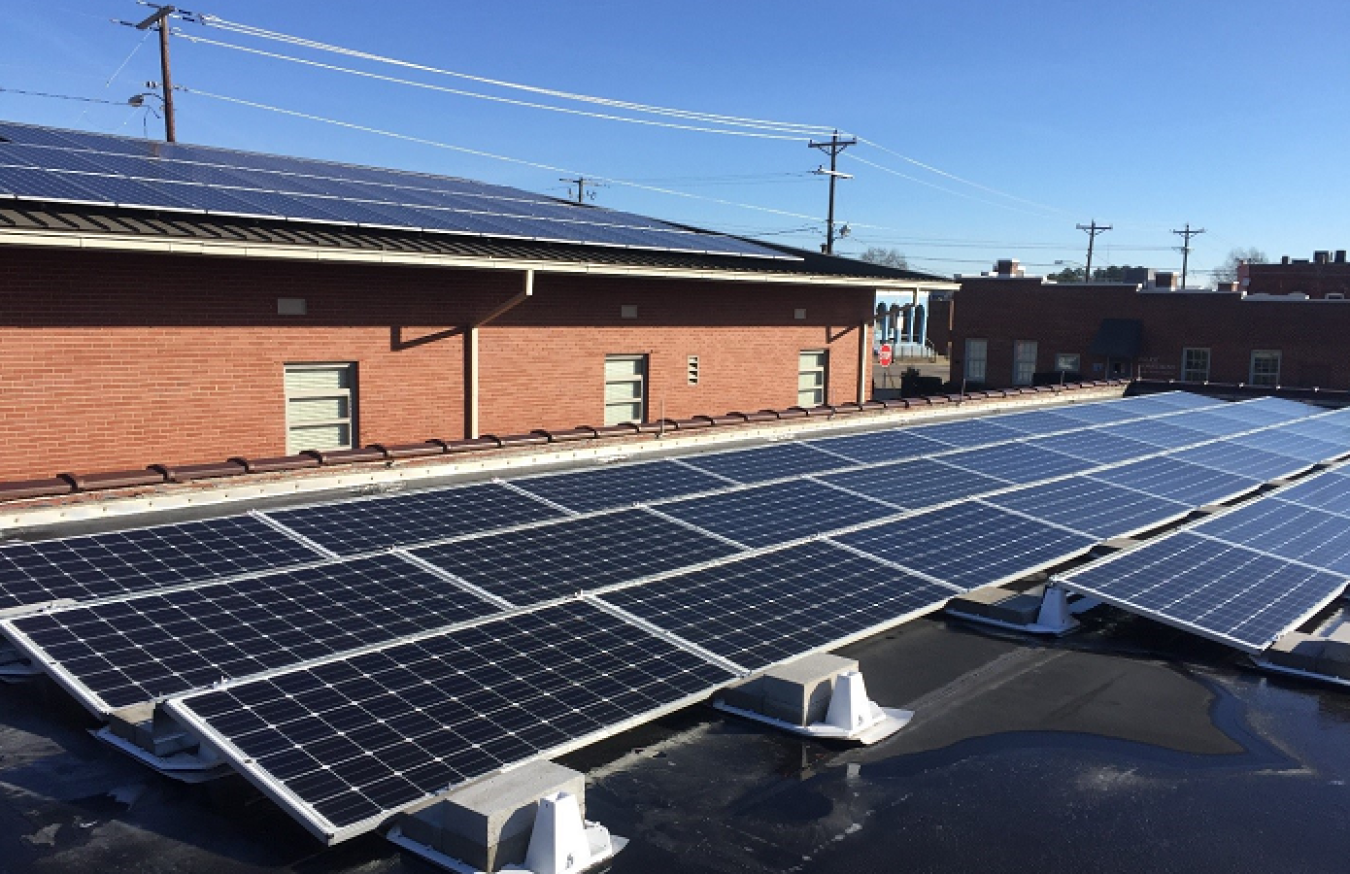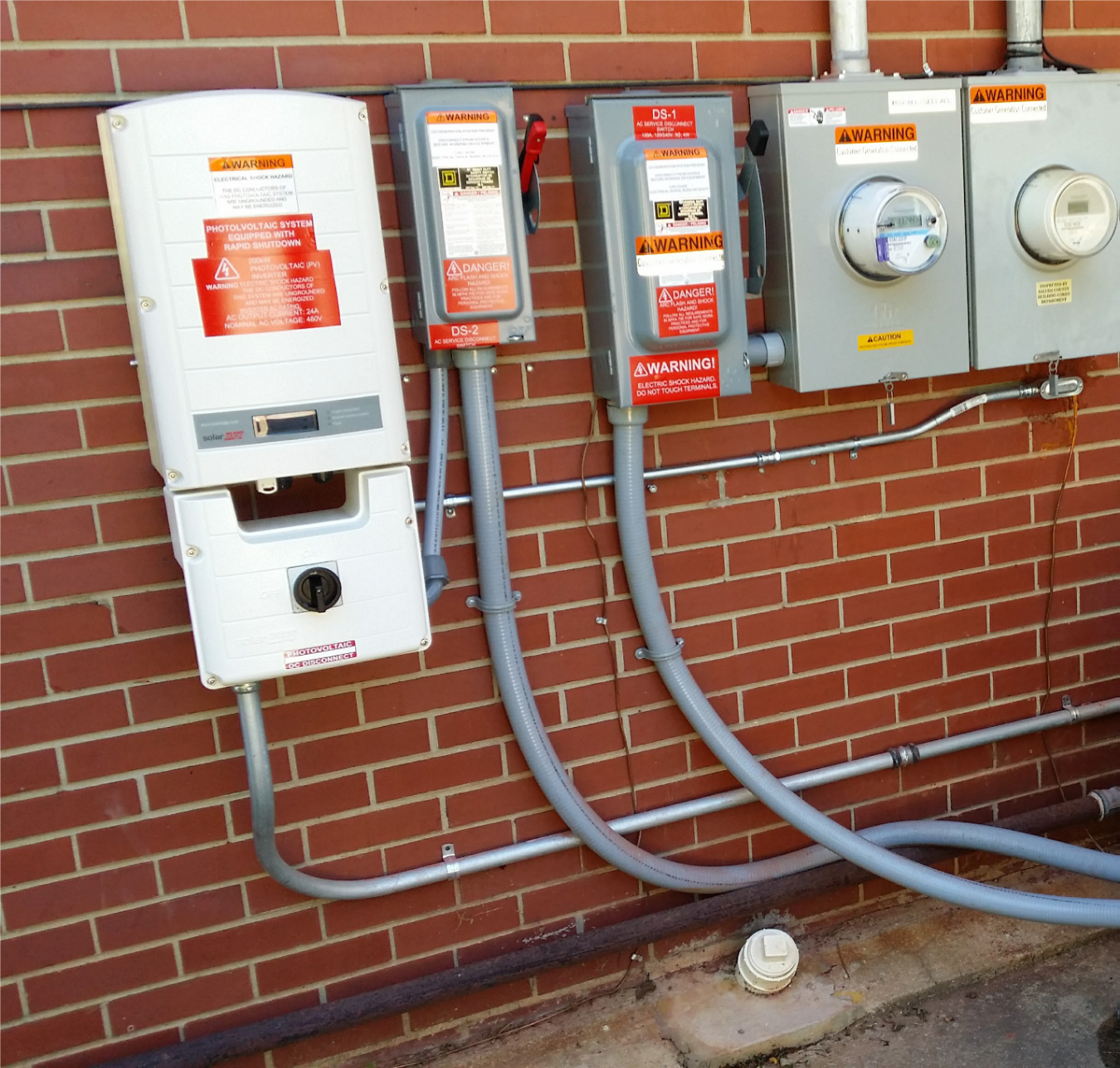The Town of Saluda, South Carolina, cut energy costs in its public buildings to save money and maintain its operating budget.
May 3, 2019
The Town of Saluda’s City Hall rooftop solar installation taken from a nearby city building that also has solar panels. Credit: Town of Saluda
The Town of Saluda, South Carolina, cut energy costs in its public buildings to save money and maintain its operating budget. The town is saving more than $13,000 per year in energy costs as a result of energy efficiency upgrades to its Town Hall building. To finance the upgrades, the Town of Saluda applied for a ConserFund Loan from the South Carolina Office of Regulatory Staff - Energy Office, which receives funding from the Energy Department's State Energy Program.
ConserFund provides funding for state agencies, public colleges, school districts, local governments, and 501(c)(3) organizations that are implementing energy efficiency improvements and renewable energy projects. Organizations that use this financing option are eligible to receive 100% of the project costs or up to $500,000 per fiscal year. The Town of Saluda was approved for a ConserFund Loan and used this financing to install a number of measures described below.
“The bills just keep getting higher and higher and it was important that we explore and see that we had this alternative for our people,” said Amelia Herlong, the Town of Saluda’s Mayor. "Through the following energy efficiency upgrades and solar installation, the Town of Saluda will save more than $13,000 per year in energy costs.
The Town Hall underwent an energy audit, which resulted in the recommendation of a number of energy efficiency and renewable energy measures that were later installed.
LED Lighting

The solar installation’s inverter and the City Hall’s electric meter work together to convert from DC to AC power, allowing electricity to be put back on the grid and the City to receive a credit on its utility bill.
The Town Hall received LED lighting upgrades throughout the facility. Exit signs, wall packs, and outdoor lighting were retrofitted or replaced with LED lights, reducing the operation costs for the Town Hall. Additionally, the fire station and sanitation facilities received funds to replace lighting fixtures with LEDs.
Occupancy Sensors
Infrared occupancy sensors – sensors that turn off lights when they detect the absence of people – were installed in infrequently used rooms such as break and meeting rooms to reduce lighting use when spaces were unoccupied.
Solar Installation
To increase energy independence, a 26 kilowatt rooftop solar array was installed, making the Town of Saluda one of the first municipalities in South Carolina to install solar panels. The town took advantage of a bill credit incentive with the local utility, SCE&G, and receive $0.22 for every kilowatt hour of solar-generated electricity that goes back to the grid for the next 10 years. This results in the rooftop solar having an expected payback period of three and a half years.
The US Department of Energy's State Energy Program provides funding and technical assistance to states, territories, and the District of Columbia to enhance energy security, advance state-led energy initiatives, and maximize the benefits of decreasing energy waste. The State Energy Program emphasizes the state’s role as the decision-maker and administrator for program activities tailored to their unique resources, delivery capacity, and energy goals.

